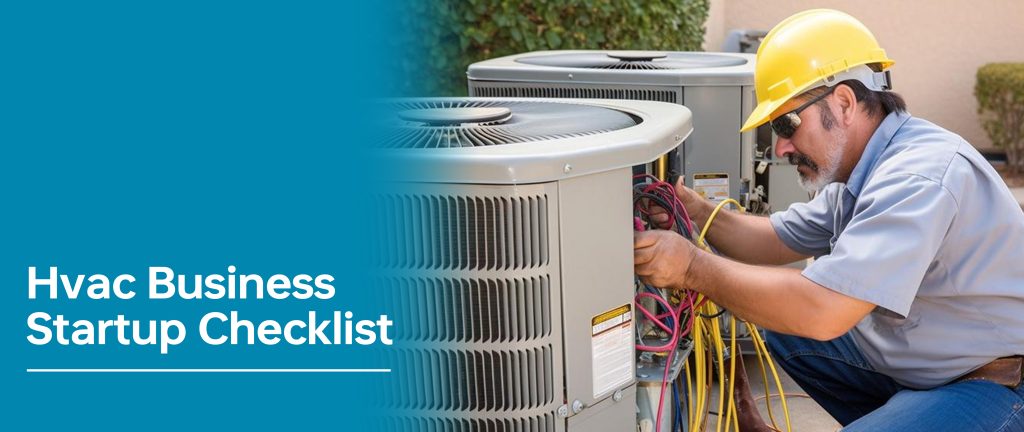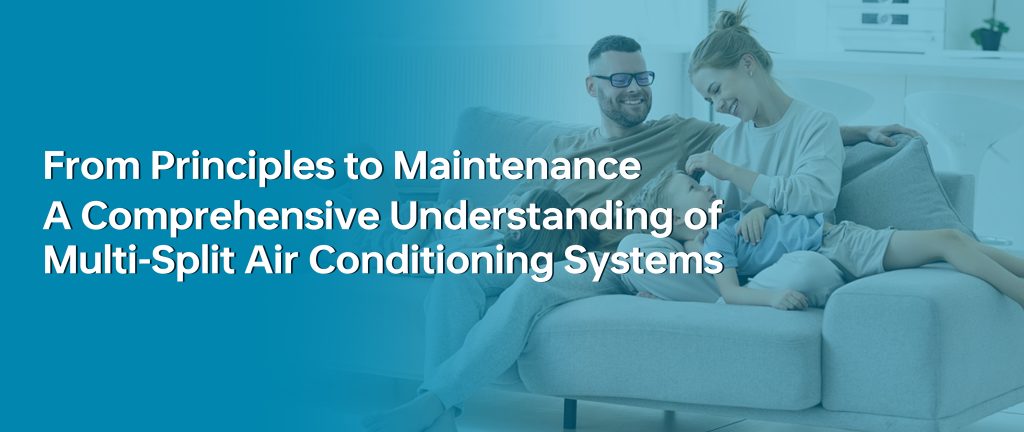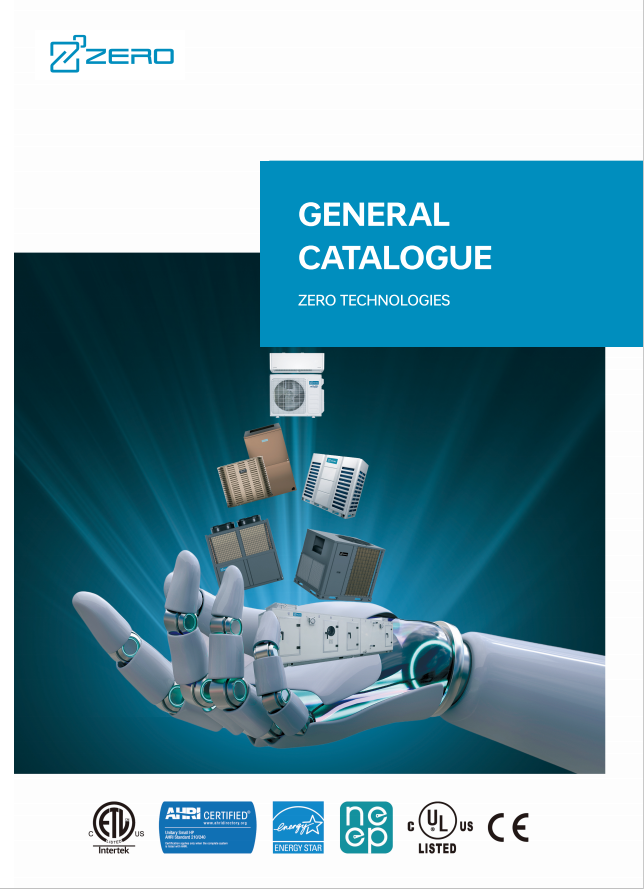What is VRF?
Variable refrigerant flow (VRF), also known as variable refrigerant volume (VRV), is an HVAC technology invented by Daikin in 1982. It is a sophisticated type of heating, ventilation, and air conditioning (HVAC) system. It uses refrigerant as the medium of heating and cooling, modulating the amount of refrigerant flowing to multiple evaporators (indoor units), thereby enabling the ability to control the temperature of individual zones or rooms within a building.
Unlike more traditional HVAC systems, VRF system allows multiple indoor units to run on the same system, which is designed differently depending on the application. VRF technology can provide not only cooling but also heating, and even simultaneous heating and cooling to different areas as per the need. This means that different zones within the same building can be cooled or heated independently and simultaneously, according to the specific needs of each area, to realize the unique climate control. This kind of tailorable thermal management strategy is attracting the commercial spaces and facility managers. Essentially, the VRF system offers a flexible, efficient, and environmentally friendly solution for modern climate control needs, making it an attractive choice for a wide range of applications.

Development Of VRF Technology
The genesis of the VRF system dates back to the early 1980s in Japan. Daikin Industries Ltd., a Japanese multinational, developed the world’s first VRF system. The technology was designed to cater to the climate control needs of the country’s high-rise buildings. In the late 1980s, as the VRF system’s performance and advantages became apparent, other major manufacturers started introducing their versions of VRF systems. This period marked the beginning of rapid technology development and competition in the VRF market.
By the mid to late 1990s, the VRF technology made its way to Europe. The European market, renowned for its stringent energy efficiency standards, embraced VRF technology for its remarkable energy-saving potential. While in the early 2000s, the new millennium saw the introduction of VRF technology in the North American market.
From 2010 onwards, VRF technology has experienced global recognition. This period marked significant technological advancements, including the introduction of heat recovery VRF systems, enabling simultaneous cooling and heating. Today, the VRF system is increasing popularity in the global HVAC market.
VRF System Application
Due to its versatility, scalability and efficiency, the VRF system is suitable for many kinds of buildings, from small to big size. Generally, VRF system can be used for residential buildings, commercial spaces, public buildings and historical buildings. Users can utilize the VRF system for superior comfort and energy saving. The Tokyo Skytree, the tallest tower in Japan, uses VRF system for the building, and even the Burj Khalifa in Dubai (the world’s tallest skyscraper) adopts VRF system when doing HVAC installation.

Current VRF Market Analysis
As of today, the global VRF market is growing significantly, driven by rising energy costs and increasing environmental awareness. According to a report by MarketsandMarkets, the global VRF system market is expected to grow from USD 17.6 billion in 2020 to USD 31.9 billion by 2025, at a compound annual growth rate (CAGR) of 12.7% during the forecast period.
The Asia Pacific region, where VRF technology was born, is currently the largest market, holding over 50% of the global share. In particular, China and Japan stand out as the leading consumers due to their rapid urbanization and expansion in the commercial and residential sectors.
The North American market is also witnessing rapid growth, expected to grow at a CAGR of 13.0% from 2020 to 2025. This growth is primarily driven by the increasing demand for commercial buildings and high-end residential complexes. While Europe’s VRF market is also expanding, thanks to the region’s stringent energy efficiency regulations and the rising adoption of green technologies.
ZERO VRF System Solution
1. ZERO VRF Product Features
<Full DC Inverter>
ZERO VRF systems feature full DC inverter technology, ensuring efficient operation and significant energy savings. The system is designed to adjust its capacity based on the cooling or heating demand, thereby reducing power consumption and enhancing comfort levels.

<Modular Technology>
ZERO VRF systems are modular, offering a scalable solution for different building sizes. Individual units can be combined into one system to accommodate larger capacities, offering both flexibility and efficiency in installation and operation.

<Optional Indoor Unit Type>
We provide a wide range of indoor unit options to suit every space and aesthetic need. These include cassette type, ducted type, floor ceiling type, and wall-mounted type, ensuring that our systems can -seamlessly integrate into any interior design.

<Intelligent Control>
ZERO VRF systems can realize intelligent control. Our systems are equipped with a user-friendly interface that enables users to control and manage their HVAC systems remotely. Through adding router and wifi function, users can get a comprehensive control for all the AC units of the HVAC system by using dedicated mobile app or a web portal. Besides, users can monitor the parameters of the AC units at any time, such as temperature, current, voltage, pressure, etc., therefore users is able to make malfunction forcasting.


<ZERO VRF System Solution>
Are you looking for a worry-free VRF solution for your project? The purpose of our one-stop VRF solution is to provide you with a more energy-saving and time-saving way for your project.
<Consulting & Model Selection>
We have an experienced sales team and technical team to give strong before-sales support. Aim to your questions or concerns about your project, we are available to provide professional replies or suggestions. After receiving the drawing of your building, our technical team will make the model selection for you timely, so that you can have a general idea about the VRF system design and system cost of the project.

<Pipeline Drawing Design>
Our technical team is available to provide tailored piping drawing designs for your project. We will give a comprehensive drawing design including piping connection, AC equipment layout, etc. It will be greatly helpful for your project when the engineer makes the system installation.

2. Accessories & Parts Integration
We are committed to providing you with a time-saving and efficient solution for your project. For your project, we can integrate all the necessary accessories & parts based on your needs. All the accessories & parts will be loaded and shipped together with the air conditioning equipment for you, which brings you a worry-free purchase experience.

<Technical Support>
Our firm connection will not end with your purchase. We care about purchasers’ feelings, therefore we focus on the after-sales service all the time. ZERO’s after-sales team will accompany you for providing you with caring after-sales technical support. You can contact us thru different ways (email, social media platforms, phone calls, etc.), and our professional team will assist you to solve the problem at the quickest time.

3. ZERO VRF Product Details

4. ZERO VRF At Project Site



Regarding more details about ZERO VRF product and solution, check out our official website: www.zerohvacr.com





